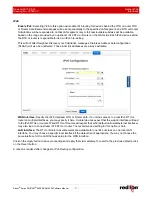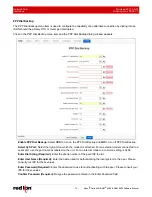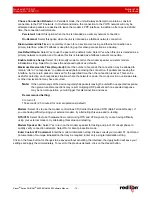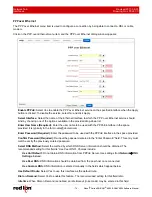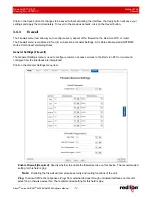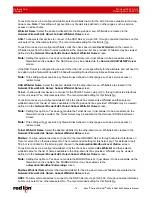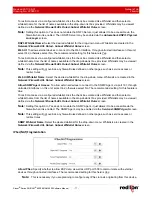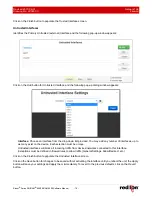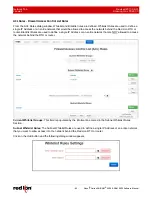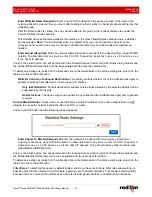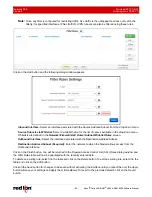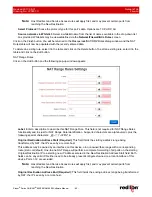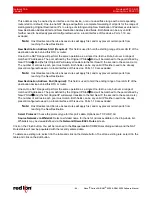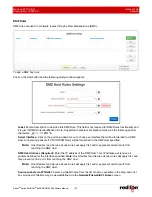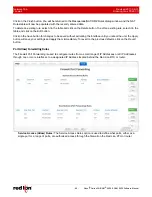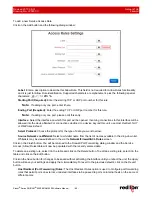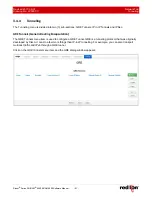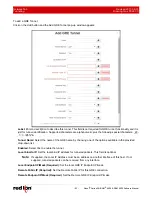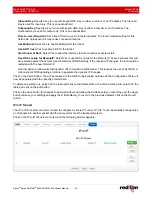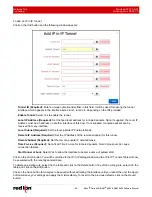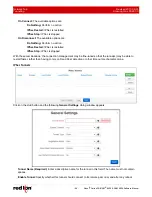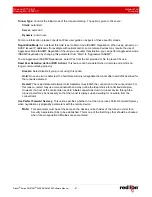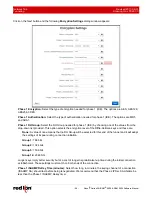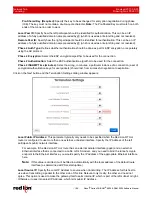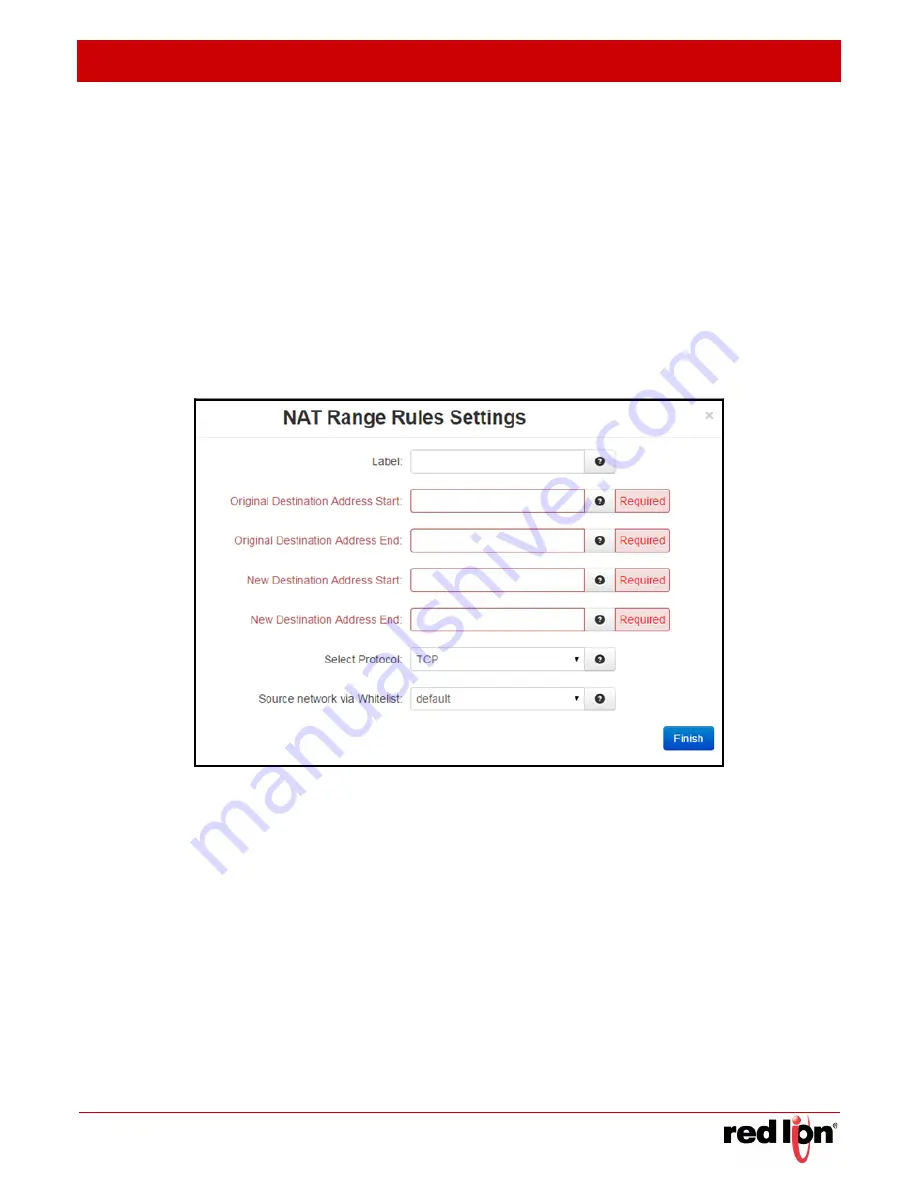
Revised 2017-08-31
Network Tab
Drawing No. LP0997-C
Firewall
Sixnet
®
Series SN/RAM
®
6000 & RAM 9000 Software Manual
- 85 -
Note:
Host Redirect and Service Access rules will apply first, and may prevent certain ports from
reaching the New Destination.
Select Protocol:
Choose the protocol type for this port’s data. Options are TCP, UDP, All.
Source network via Whitelist:
Select a whitelist name from the list of names available in the drop-down list
box provided. Whitelists may be viewed/defined via the
Network/Firewall/ACL Rules
screen.
Click on the
Finish
button. You will be returned to the Masquerade/NAT/DMZ Rules dialog window and the NAT
Rules table will now be populated with the recently entered data.
To delete an existing rule, select it in the table and click on the
Delete
button. To edit an existing rule, select it in the
table and click on the
Edit
button.
NAT Range Rules
Click on the
Add
button and the following pop-up window appears:
Label:
Enter a description to describe this NAT Range Rule. This field is not required for NAT Range Rules
functionality and it is just for NAT Range Rule identification. Supported characters are alphanumeric plus the
following special characters: _@-./',;:?~! #$%^&
Original Destination Address Start (Required):
This field holds the starting address range being
transformed by NAT, the IP’s seen by a remote host.
This address may be owned by an interface on this device, oran unowned/fake range with a corresponding
route (static or default). One-to-one NAT Range will perform a complete forwarding of all ports on the starting
Original Destination IP to a starting new IP address entered in the New Destination Address Start field. Both
fields can be any valid IP. Neither need to be already present/configured/owned on a local interface of this
device. Ports 1-19 are excluded.
Note:
Host Redirect and Service Access rules will apply first, and may prevent certain ports from
reaching the New Destination.
Original Destination Address End (Required):
This field holds the ending address range being transformed
by NAT, the IP’s seen by a remote host.

